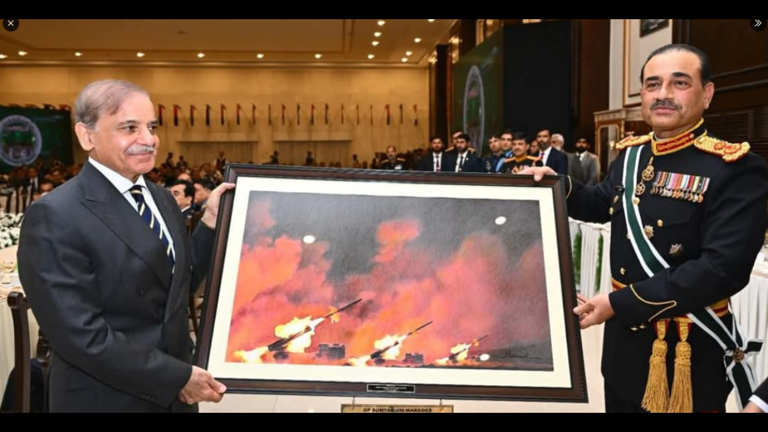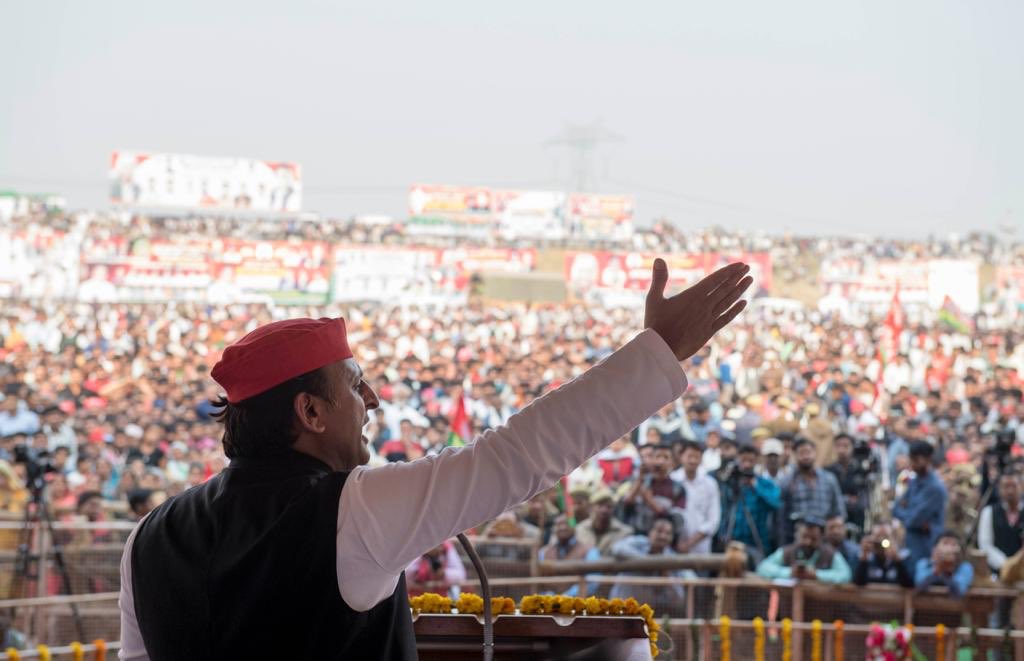Did Pakistan Fabricate a Strike on India Using a Chinese Military Image?
In an embarrassing turn of events, Pakistan Army Chief General Asim Munir has been ridiculed both domestically and internationally after presenting a fraudulent memento to Prime Minister Shehbaz Sharif. The framed image, supposedly commemorating a military strike on India under “Operation Bunyan al-Marsus,” turned out to be a 2019 Chinese military photograph
BIG NEWS 🚨 Pakistan's PM gifts Asim Munir a 2019 Chinese drill photo, claiming it's 'OP Bunyan Al Marsus' 😭😂🔥
— Times Algebra (@TimesAlgebraIND) May 26, 2025
Pakistan is now using a Chinese Drill Photo to Celebrate Its own Military Operation 🤣
A high-profile dinner hosted by Pakistan Field Marshal Asim Munir, Chief of… pic.twitter.com/zLAY0LM5dd
The image, widely circulated on the internet and attributed to Chinese military photographer Huang Hai, has been used in the past to showcase the PHL-03 multiple rocket launcher during Chinese army drills. This act of misrepresentation quickly spiraled into a full-blown PR disaster for Pakistan, exposing what many have labeled as a failed propaganda attempt.
What Exactly Did Asim Munir Do, and How Was It Exposed?
During a formal military dinner attended by top civil and army officials, General Asim Munir presented a framed photograph to PM Shehbaz Sharif, claiming it represented Pakistan’s military strike against India. Dubbed Operation Bunyan al-Marsus, the operation itself was never officially acknowledged by international agencies or media, yet the Pakistani military seemingly attempted to glorify it with this ceremonial gift.
However, sharp-eyed netizens and open-source fact-checkers quickly identified the image’s true origin. The photograph had nothing to do with Pakistan. Instead, it came from a Chinese military exercise in 2019, showcasing rocket artillery during a drill. A reverse image search using tools like Google Image Search immediately debunked the Pakistani claim, matching the image to prior publications featuring the People’s Liberation Army (PLA) of China.
The comedian Asim Munir of Pakistan gifting painting of Operation Bunyan Al Marsus to another comedian PM Shahbaz Sharif during a dinner. It’s actually a 2019 photo from a Chinese military exercise. 😛
— Rathan Ramesh Poojary (RRP)🇮🇳 (@RathanRameshRR1) May 25, 2025
Should we call it a country? #OperationSindoor pic.twitter.com/ZV09voIcUs
Pakistan's latest masterpiece: Shehbaz Sharif presents a photoshopped painting from a 2019 Chinese drill to Failed Marshal Asim Munir 🎨💥
— Yash Rawat (@Yashfacts28) May 25, 2025
Guess when you can’t win on the battlefield, you win in Canva #LumberOneFauj pic.twitter.com/pteqdcsGqV
What was meant to be a symbolic token of military achievement quickly became a global embarrassment, with memes, ridicule, and criticism flooding social media. The fact that such a blatant manipulation was presented to the Prime Minister at an official function made the blunder even more damaging to the credibility of the Pakistan Army.
Why Does This Matter, and What Are the Wider Implications for Pakistan?
This incident is more than just a meme-worthy moment—it reflects a deeper credibility crisis in Pakistan’s military communication and strategic narrative. The use of fabricated visuals to showcase military success, especially against a rival like India, exposes a pattern of desperation and media manipulation. It also raises questions about internal military accountability—how did such a doctored image pass through official channels without verification?
For a nuclear-armed nation with global attention on its geopolitical actions, this sort of propaganda misfire has significant consequences. First, it damages Pakistan’s international image, especially among allies who expect responsible military conduct. Second, it gives India and global observers valid reason to question any future military claims coming from Pakistan’s defense establishment. Third, it erodes domestic trust in national institutions, as citizens become more skeptical of state-controlled narratives.
The use of a Chinese image not only underscores the lack of original military documentation, but also implies that Pakistan’s military might be relying on borrowed visuals to manufacture victories. In the age of open-source intelligence and AI-powered fact-checking, such deceptive practices are not only unsustainable—they’re immediately exposed, and the fallout is swift and brutal.
The “photoshopped victory” that Pakistan attempted to portray through General Asim Munir’s memento has backfired spectacularly. The use of a repurposed Chinese image to commemorate a non-verified military operation against India has not only embarrassed Pakistan’s leadership but also opened up the country to international ridicule and scrutiny.
In an era where transparency, authenticity, and digital verification are paramount, this incident serves as a cautionary tale for governments attempting to manipulate public perception. Propaganda may once have been easy to hide—but in the digital age, truth is just a reverse image search away.





















